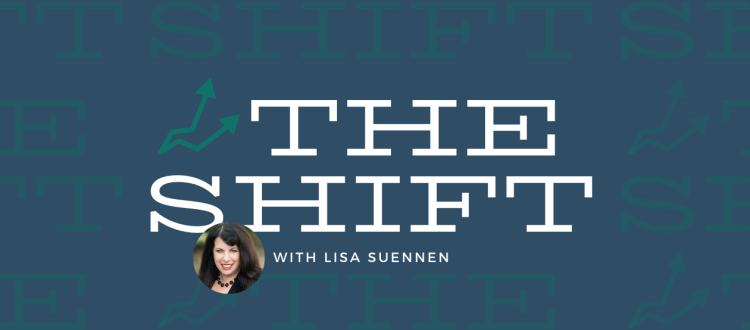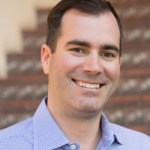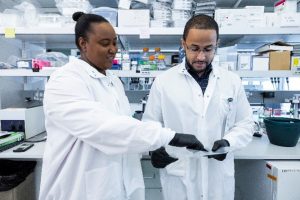Get In-depth Biotech Coverage with Timmerman Report.
1
Jul
2022
An Open Letter from Female Biotech Leaders on Post-Roe America

Shehnaaz Suliman, CEO, ReCode Therapeutics
[Editor’s Note: this letter was drafted by female biotech leaders in response to the Supreme Court’s Dobbs decision. It was co-signed by more than 65 female biotech executives as of July 1. They’re listed at the end.]
Friends and colleagues, legislators and elected officials
We join the resounding millions in chorus to express our profound dismay and disappointment at the United States Supreme Court’s decision to strike down and ignore our fundamental rights as women to make personal reproductive health choices and for clinicians to practice evidence-based medicine without fear of reprisal.

Julia Owens, CEO, Ananke Therapeutics
It is a tragic moment in our history to see this blatant disregard for stare decisis and the repudiation of the will of the majority of the populace by the court’s conservative bloc. It negates the ability of medical practitioners that are best suited to provide care to vulnerable, pregnant women. It flagrantly ignores the physical, mental and financial consequences of carrying an unwanted pregnancy to term.
It is notable and discouraging that the decision comes at a time when our democracy bends under the heavy strain of partisanship.

Sheila Gujrathi, former CEO Gossamer Bio; board chair Ventyx Biosciences, ImmPACT Bio, ADARx Pharmaceuticals
By making such a cataclysmic decision, the Court demonstrated that America has become a country focused on special interests of the few rather than the interests of the majority. Whilst our nation was once conceived as a beacon of liberty for all, and an inclusive democracy and protector of fundamental human rights, this Court’s decision forces us to recognize the jolting reality that not all Americans are seen as equal.
Our right to be pregnant or unpregnant is a fundamental personal choice and civil liberty that should be safeguarded constitutionally. We believe in freedom of choice over our own bodies for all – but especially for women, underrepresented minorities, and LGBTQIA+ communities.
Abortion is reproductive healthcare. As doctors, scientists, innovators, caregivers, leaders and allies who are at the forefront of innovation in science and medicine for the benefit of patients and women around the world – we decry and denounce the decision by the Court.
We will not stand by silently. Our voices rise. We strongly dissent.
Shehnaaz Suliman, MD, MBA, M.Phil.
CEO ReCode Therapeutics
Julia Owens, PhD
CEO Ananke Therapeutics
Sheila Gujrathi, MD
Former CEO Gossamer Bio
Board Chair Ventyx Biosciences, ImmPACT Bio, ADARx Pharmaceuticals
Amy Burroughs
CEO Cleave Therapeutics
Wendye Robbins, MD
CEO Blade Therapeutics
Rene Russo
CEO Xilio Therapeutics
Hilary M Malone, PhD
CEO Certego Therapeutics
Leslie J Williams
CEO hC Bioscience
Rosana Kapeller MD, PhD
CEO ROME Therapeutics
Rekha Hemrajani
CEO Jiya Acquisition Corp.
Julie Anne Smith
ESCAPE Bio, Inc.
Aetna Wun Trombley, Ph.D.
CEO Lycia Therapeutics
Grace E. Colón, Ph.D.
CEO InCarda Therapeutics
Elizabeth Jeffords
CEO Iolyx Therapeutics
Alice Zhang
CEO, Verge Genomics
Angie You, PhD
Former CEO Amunix Pharmaceuticals, Board director Oric Pharmaceuticals and RayzeBio
Joanne D Kotz, PhD
CEO Jnana Therapeutics
Sabrina Martucci Johnson
CEO Daré Bioscience
Nancy Whiting, PharmD
CEO Recludix Pharma
June Lee, MD
Former CEO, Esker Therapeutics
Board Director at Tenaya Therapeutics, GenEdit, Cincor Pharma, Eledon Therapeutics
Kristen Fortney, PhD
CEO BioAge Labs
Yael Weiss MD PhD
CEO, Mahzi Therapeutics
Sevgi Gurkan, MD
Venture Partner, Orbimed
Sarah Boyce
CEO, Avidity Biosciences
Emily Drabant Conley, PhD
CEO Federation Bio
Board Director at Nuvalent, Medrio, and TMRW
Maria Soloveychik, PhD
CEO SyntheX
Kristine Ball
CEO Soteria Biotherapeutics
Samantha Truex
CEO, Upstream Bio
Kate Haviland
CEO Blueprint Medicines
Victoria Richon
Former CEO of Ribon Therapeutics
Ramani Varanasi
Former CEO, X-Biotix Therapeutics
Managing Director, ReVive
Daphne Koller, Ph.D.
CEO and Founder, insitro
Co-founder and former co-CEO, Coursera
Diala Ezzeddine, PhD
Former CEO, Xios Therapeutics
Ivana Liebisch
CEO Vigil Neuroscience
Catherine Stehman-Breen
CEO, Chroma Medicine
Alicia Levey, PhD
COO, Pionyr Immunotherapeutics
Mary Rozenman
CFO/CBO, Insitro
Susan B. Dillon
CEO Aro Biotherapeutics
JeenJoo Kang
CEO Appia Bio
Barbara Troupin, MD
Board Director, Equillium
Lisa Bowers
Former CEO, Rhia Ventures
CCO, Day One Bio
Charlene Liao, PhD
CEO Immune-Onc Therapeutics, Inc.
Sophia Yen, MD, MPH
CEO/Co-Founder
Pandia Health
Melita Sun Jung
Chief Business Officer, ShouTi
Siobhan Nolan Mangini
President & CFO, NGM Bio
Caryn McDowell
Chief Legal Officer, Cortexyme, Inc.
Lucinda Y. Quan
EVP, CBO & General Counsel, Aligos Therapeutics, Inc.
Suha Jhaveri
CBO and CCO, Leyden Labs
Christy Oliger
Board Director, Sierra Oncology, Reata, Replimune, Karyopharm
Yvonne Linney, PhD
COO Artificial Inc.
Christine O’ Brien
CEO, Tizona Therapeutics
Gisela A. Paulsen
COO, Oncocyte Corporation
Lori Lyons-Williams
CEO, a stealth biotech company
Karen LaRochelle
Venture Capital Advent Life Sci
Artax Biopharma CBO
Jodie Morrison
Venture Partner, Atlas Venture
Katherine Vega Stultz
President and CEO, Ocelot Bio
Katherine Bowdish
CEO , PIC Therapeutics
Patrice Milos
Board Director at 54gene, SeqLL, ProThera Bio
Sylvia McBrinn
Former CEO, Axerion Therapeutics
Director, BioAtla
Sarah Kurz
EVP, Partner Therapeutics
Lisa Iadicicco
Executive Director – WIB
Rosamond Deegan
CEO OMass Therapeutics
Linda Blackerby
CDIO, Informa PLC
Jennifer Petter
Founder and Chief Innovation Officer, Arrakis Therapeutics
Nerissa Kreher MD
CMO Entrada Therapeutics
Laura Lande-Diner
CBO Satellite Bio
Donna Higgins
CEO, The Higgins Group
Gail Maderis
CEO Antiva Biosciences
Rhonda Farnum
CBO, Theravance Biopharma
Clarissa Shen,
COO and Board Director, Q Bio

































